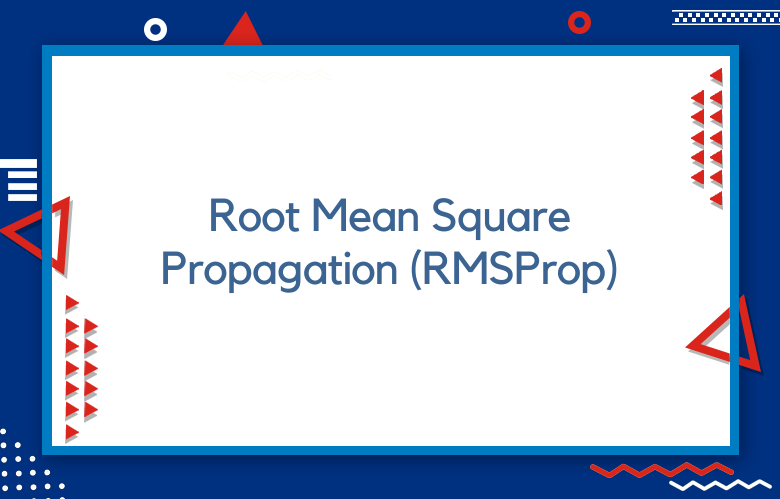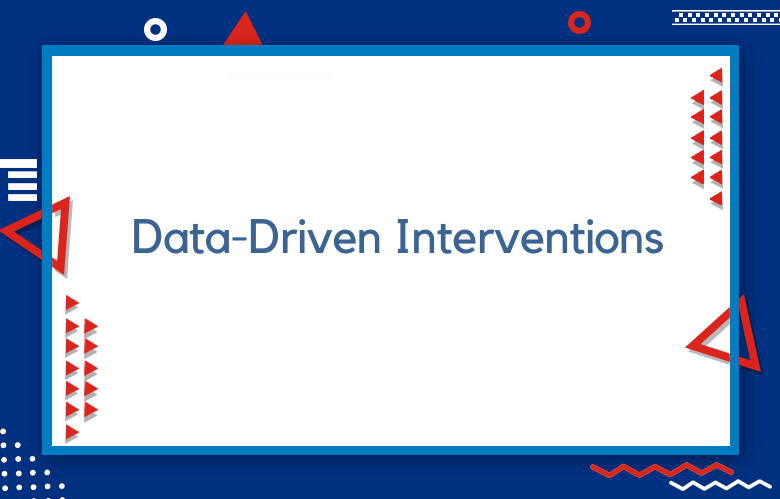TimesFM for Marketing: Boost Your Strategy with Time Series Data

- Key Takeaways
- Understanding TimesFM in Marketing
- Benefits of Using TimesFM
- Enhancing Forecasts with TimesFM
- Optimizing Strategies with Time Series
- Implementing TimesFM in Campaigns
- Best Practices for Effective Use
- Driving Growth with Data Insights
- Challenges and Considerations
- Final Remarks
- Frequently Asked Questions
- What is TimesFM in marketing?
- How can TimesFM benefit my marketing strategy?
- How does TimesFM enhance forecasting accuracy?
- What strategies can I optimize with TimesFM?
- How do I implement TimesFM in my campaigns?
- What are some best practices for using TimesFM?
- What challenges should I consider when using TimesFM?
TimesFM for marketing is changing the game. This platform emerged as a powerful tool for businesses to reach their target audience. With its unique approach, TimesFM blends traditional marketing strategies with modern technology.
TimesFM offers innovative solutions that simplify this process. Businesses can make smarter decisions and maximize their impact by leveraging data-driven insights.
Key Takeaways
- TimesFM is a powerful tool for marketers looking to enhance their data analysis and forecasting capabilities.
- Using TimesFM, businesses can improve campaign accuracy and make better decisions based on historical data trends.
- Best practices include regularly updating data inputs and collaborating with data analysts to maximize the benefits of TimesFM.
- Overcoming data quality and integration challenges is crucial for successfully implementing TimesFM in marketing campaigns.
- Leveraging data insights from TimesFM can drive significant growth, helping companies stay ahead in competitive markets.
Understanding TimesFM in Marketing
Definition
TimesFM stands for Time Series Forecasting Model. It helps businesses analyze marketing data over Time. Marketers can identify patterns in sales, customer engagement, and other vital metrics. By understanding these trends, companies can make informed decisions.
Integration with Tools
TimesFM integrates well with existing marketing tools and platforms. Many businesses collect data using software like Google Analytics or CRM systems. TimesFM analyzes this data in a time-based context, allowing marketers to see how their campaigns perform over different periods.
For example, a company might notice that email campaigns perform better during the holiday season. With TimesFM, they can track this over several years and adjust their strategies accordingly.
Importance of Time Series Analysis
Time series analysis is crucial for understanding consumer behavior. It allows marketers to observe changes in buying habits over Time. For instance, if a product’s sales spike during the summer months, companies can prepare for this trend next year.
Marketers can also spot seasonal patterns and long-term shifts in preferences. This insight helps them create targeted campaigns that resonate with consumers at the right Time.
Benefits of Using TimesFM
- Improved Decision-Making: Companies can make more intelligent choices based on accurate forecasts.
- Enhanced Targeting: Marketers can tailor their messages to when consumers are most receptive.
- Resource Optimization: Businesses can allocate resources more efficiently by anticipating demand.
Real-Life Example
A clothing retailer used TimesFM to analyze sales data from previous years. They discovered that swimwear sales peaked every June and July. Using this information, they planned early promotions for summer collections, which resulted in a 30% increase in sales during those months.
Benefits of Using TimesFM
Trend Identification
TimesFM helps marketers identify trends and patterns in their data. It analyzes large sets of information quickly, allowing marketers to spot changes in consumer behavior over Time. For example, if a product sees a spike in interest during summer, it can guide future marketing efforts.
Using TimesFM, teams can track what customers are buying or looking for and see which promotions work best.
Data-Driven Decisions
Another critical benefit of TimesFM is improved decision-making. Marketers rely on data-driven insights to make choices, which reduces guesswork and increases accuracy. Instead of relying on hunches, they base actions on solid evidence.
With this knowledge, they can allocate resources where they matter most, leading to better results and higher returns on investment.
Targeting and Personalization
Enhanced targeting and personalization capabilities stand out with TimesFM. It allows marketers to create tailored campaigns for specific audiences. By analyzing customer data, businesses can craft messages that resonate deeply.
For example, a clothing retailer can use TimesFM to segment customers based on past purchases. They can then send personalized offers that appeal directly to those interests, boosting engagement and conversion rates.
Marketers also efficiently reach different demographics. They can target ads based on age, location, or shopping habits. This precision ensures marketing efforts hit the right audience at the right Time.
Campaign Optimization
TimesFM also supports ongoing campaign optimization. Marketers receive real-time feedback on their strategies and can adjust campaigns instantly based on performance metrics.
This flexibility keeps campaigns fresh and relevant. Teams can change images or messaging immediately if an ad fails. This quick response helps maintain consumer interest and improves overall effectiveness.
Cost Efficiency
Another advantage of using TimesFM for marketing is cost efficiency. By identifying what works best, companies save money on ineffective strategies and can focus budgets on high-performing areas instead.
For example, businesses can reduce spending if a channel yields low results. Instead, they invest more in successful channels like social media or influencer partnerships.
Enhancing Forecasts with TimesFM
Accuracy Improvement
TimesFM significantly boosts the accuracy of sales and marketing forecasts. It analyzes data using advanced algorithms that assess various factors that influence sales. These algorithms consider past sales trends, economic indicators, and customer behavior. This detailed analysis leads to more reliable predictions.
Companies that use TimesFM often see better results. This means less guesswork and more informed decisions. With precise data, businesses can allocate resources efficiently. They know when to increase inventory or ramp up marketing efforts.
Historical Data Use
TimesFM collects extensive datasets from previous years. This information helps identify patterns and trends over Time. For instance, if a product consistently sells well during certain months, this trend can guide future marketing efforts.
Businesses can also spot changes in consumer preferences through historical analysis. By examining past data, companies can anticipate shifts in demand and tailor their marketing strategies.
Seasonal Trends Impact
Seasonal trends significantly affect marketing strategies. TimesFM analyzes seasonal data to provide insights into these trends. For example, many retailers experience increased sales during the holiday season. Understanding this pattern allows businesses to prepare effectively.
Companies can create targeted campaigns for specific seasons. They might offer promotions or discounts aligned with seasonal trends. This strategy attracts more customers during peak times. It helps maintain steady sales during slower periods.
Optimizing Strategies with Time Series
Adjusting Techniques
Time series data helps businesses adjust their marketing strategies effectively. Companies analyze past trends to predict future behavior. For example, a retail store can use sales data from previous years to plan promotions during peak seasons.
Businesses can implement various adjustment techniques. One technique is to apply moving averages to smooth out fluctuations in data, which reveals underlying trends more clearly. Another method uses seasonal decomposition to help separate seasonal effects from other variations.
These techniques enable marketers to make informed decisions. Understanding patterns allows them to better time campaigns, which leads to improved engagement and higher sales.
Key Performance Indicators
Key performance indicators (KPIs) are crucial for measuring marketing success. TimesFM can optimize several KPIs effectively. Time series analysis benefits metrics like customer acquisition cost (CAC) and return on investment (ROI).
By tracking CAC over Time, businesses can identify the most effective channels for attracting customers. If a particular platform shows a decreasing CAC trend, it may warrant increased investment.
ROI can also be enhanced using time series data. Analyzing historical ROI helps firms recognize which campaigns yield the best returns. Marketers can then allocate budgets accordingly, maximizing profitability.
Real-Time Data Role
Real-time data plays a vital role in refining marketing efforts. For instance, if a product suddenly gains popularity, marketers can increase advertising efforts immediately.
Using real-time analytics, businesses can fine-tune their strategies on the fly. They can monitor social media trends and adjust messaging based on audience reactions. This agility ensures that marketing remains relevant and practical.
Incorporating real-time insights into decision-making enhances overall strategy effectiveness.
Implementing TimesFM in Campaigns
Integration Steps
Integrating TimesFM into marketing campaigns requires a clear plan. First, define your campaign goals.
Next, gather historical data relevant to your marketing efforts. This data may include past sales figures, customer engagement metrics, and social media interactions.
Then, set up TimesFM analytics tools. Ensure that all team members have access to these tools. They should understand how to interpret the data effectively.
After that, the data will be analyzed for trends and patterns. Look for seasonal spikes or dips in customer behavior. This analysis can guide your marketing strategies.
Finally, implement changes based on your findings. Adjust your campaigns according to the insights gained from TimesFM analytics. Monitor the results continuously to refine your approach.
Successful Examples
Several successful campaigns have used TimesFM analytics. For instance, a famous clothing brand analyzed sales data over three years. They discovered that certain styles sold better during specific seasons. By using this data, they launched targeted promotions during peak times. Sales increased by 30% during those promotional periods.
Another example comes from a tech company that tracked user engagement on its website. They identified users as more active on weekends, so the company adjusted its email marketing schedule accordingly. As a result, their click-through rates improved significantly.
These examples show how data-driven decisions can enhance marketing effectiveness.
Team Training Importance
Training teams is crucial for maximizing the potential of TimesFM tools. Without proper training, team members may misinterpret data or overlook critical insights.
Start with introductory workshops on TimesFM features and functionalities. These sessions should cover how to access and analyze data effectively.
Encourage ongoing learning through regular training updates. Marketing trends change rapidly, so teams must stay informed about new features and best practices.
Involving teams in the process increases their confidence in using TimesFM tools. Confident teams make better decisions based on accurate data analysis.
Best Practices for Effective Use
Regular Updates
Regular updates of time series data ensure accuracy. Data can change frequently, and using outdated information can lead to poor decisions. Set a schedule for reviewing your data. Monthly or quarterly reviews help keep everything current.
Marketing teams should prioritize this practice. Relying on fresh data can help them avoid mistakes. For example, if a company tracks customer preferences, changes in those preferences must be noted. This allows marketers to adjust strategies effectively.
Team Collaboration
Collaboration between marketing and data analytics teams is essential. Both teams bring unique skills to the table. Marketing experts understand customer behavior, while data analysts know how to interpret numbers.
These teams can create better campaigns, share insights, and quickly identify trends by working together. For instance, if analytics show a spike in interest in a product, the marketing team can quickly respond with targeted ads. This partnership leads to faster and more effective decision-making.
Clear Objectives
Setting clear objectives is crucial when using TimesFM in marketing efforts. Goals guide all activities and help measure success. Without clear targets, teams may struggle to focus their efforts.
Start by defining what you want to achieve. Is it increasing sales, improving brand awareness, or enhancing customer engagement? Once objectives are set, use TimesFM to track progress. This will allow teams to see if they are on the right path or need adjustments.
Data Visualization
Data visualization tools enhance understanding of time series data. Charts and graphs make complex information more accessible, and marketers can quickly spot trends and patterns.
Using visual aids improves communication within teams. Presenting findings in an easy-to-understand format helps everyone stay informed. This clarity leads to better strategies and decision-making.
Continuous Learning
Marketing is an ever-evolving field. Teams should commit to continuous learning about data analysis techniques. Attending workshops or online courses can improve skills.
Staying updated on industry trends also matters. New tools and methods emerge regularly, and teams that keep up with changes remain competitive and effective.
Feedback Loops
Implementing feedback loops enhances the effectiveness of marketing strategies. Regularly collect feedback from customers.
Use this feedback to refine campaigns continuously—adjustments based on real-time input lead to improved results over Time.
Driving Growth with Data Insights
Increased ROI
Data insights can significantly boost return on investment (ROI) in marketing. Businesses that use data to guide their decisions often see better results. Studies show that data-driven companies are 23 times more likely to acquire customers. This is because informed decisions lead to targeted campaigns. When marketers understand their audience, they can create messages that resonate.
Using tools like Time allows marketers to analyze customer behavior and preferences. This information helps craft personalized experiences, increasing engagement and driving sales. Companies can track what works and what doesn’t, adjusting strategies for maximum impact.
Innovative Strategies
Data insights enable innovative marketing strategies. For example, analyzing social media interactions can reveal which content types perform best. This knowledge allows teams to experiment with new formats or platforms.
Moreover, insights from customer feedback can inspire fresh ideas. Businesses can adapt quickly if customers need a specific product feature. This responsiveness fosters loyalty and builds trust with consumers. Marketers armed with data are better prepared to innovate continuously.
Adapting to Change
The market landscape constantly shifts, and companies must adapt to stay relevant. Data insights play a crucial role in this process. By monitoring industry trends and consumer behavior, businesses can pivot when necessary.
For instance, during economic downturns, customers may change spending habits. Understanding these shifts enables companies to adjust their marketing tactics effectively. They might focus on value-driven messaging or highlight discounts and promotions.
Using data also helps identify emerging markets or demographics. As new opportunities arise, businesses can position themselves accordingly. This proactive approach minimizes risks associated with market changes.
Challenges and Considerations
Data Quality
Data quality is a significant concern when using TimesFM. Companies may rely on flawed information, which can harm marketing strategies. For instance, if customer demographics are misrepresented, marketing campaigns may miss their target audience.
Regular audits of data sources help ensure accuracy. Organizations should invest in tools that validate data before use.
Skilled Personnel
Interpreting complex data sets requires skilled personnel. Not everyone can analyze the information effectively. Trained analysts can uncover trends and patterns that others might miss. They provide context and meaning to raw data.
Hiring experts can be expensive but necessary. Businesses need individuals who understand both marketing and data analytics. These professionals bridge the gap between technical details and marketing strategies. Without them, companies may struggle to leverage TimesFM’s full potential.
Privacy Regulations
Privacy regulations impact how data is collected and used. Laws like GDPR in Europe set strict rules for handling personal information.
Organizations must prioritize transparency in their data practices and inform customers how their data will be used. Building trust with customers enhances brand loyalty.
Implementation Challenges
Implementing TimesFM might also present challenges. Integrating new systems into existing workflows can disrupt operations, and employees may resist changes due to fear of the unknown or a lack of training.
Companies should offer comprehensive training programs to ease this transition. Engaging employees in the process fosters acceptance and enthusiasm for new tools.
Cost Considerations
Costs associated with TimesFM can also be a concern. Businesses must consider software licensing fees, maintenance costs, and personnel expenses. Budgeting appropriately ensures that organizations do not overspend on data solutions.
Investing in TimesFM may yield significant returns over Time. However, careful planning is essential to avoid financial strain.
Balancing Insights and Ethics
Balancing insights gained from TimesFM with ethical considerations is crucial. Ethical marketing practices enhance brand reputation and customer trust.
Organizations should develop clear policies on data usage. This approach complies with regulations and demonstrates a commitment to responsible practices.
Final Remarks
TimesFM is a game changer for your marketing strategy. By understanding its benefits and how to implement it effectively, you can make data-driven decisions that drive growth. You’ll enhance your forecasts, optimize strategies, and tackle challenges head-on.
Now’s the Time to leverage TimesFM in your campaigns. Embrace best practices and watch your insights transform into actionable results. Don’t wait—leap and elevate your marketing efforts today. Your data holds the key to success!
Frequently Asked Questions
What is TimesFM in marketing?
TimesFM, or Time Series Forecasting Model, is a statistical method for analyzing and predicting future marketing trends based on historical data. It helps marketers make informed decisions.
How can TimesFM benefit my marketing strategy?
Using TimesFM allows for accurate forecasts, enabling better resource allocation, targeted campaigns, and improved customer engagement. This leads to higher ROI and more effective marketing efforts.
How does TimesFM enhance forecasting accuracy?
TimesFM leverages historical data patterns to identify trends and seasonality. Analyzing these patterns generates more reliable predictions than traditional methods.
What strategies can I optimize with TimesFM?
You can optimize various strategies, including budget allocation, campaign timing, and customer segmentation. This ensures your marketing efforts align with predicted consumer behavior.
How do I implement TimesFM in my campaigns?
Start by collecting relevant historical data. Then, TimesFM tools or software can analyze this data and generate forecasts. Integrate these insights into your campaign planning process.
What are some best practices for using TimesFM?
Focus on high-quality data collection, regularly update your models, and continuously monitor performance. Collaborate with data analysts to refine your approach for optimal results.
What challenges should I consider when using TimesFM?
Common challenges include data quality issues, the complexity of model selection, and the need for technical expertise. Addressing these can enhance the effectiveness of your forecasting efforts.



